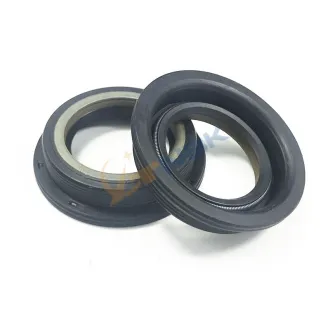How to Install a Power Steering Seal and Its Installation Cost?
Feb. 19, 2024
Power steering seals play a critical role in maintaining the integrity of your vehicle's power steering system, ensuring smooth operation and preventing leaks. Installing a power steering seal involves several steps to ensure proper function and longevity. Additionally, understanding the cost associated with this installation can help you budget effectively and make informed decisions about your vehicle's maintenance. In this guide, we'll walk you through the process of installing a power steering seal and discuss the typical cost involved.
Understanding Power Steering Seals
Before delving into the installation process, it's essential to understand the function of power steering seals. These seals are designed to prevent hydraulic fluid from leaking out of the power steering system, which could lead to a loss of power steering assist and potential damage to the components. Over time, seals may wear out due to age, heat, or other factors, necessitating replacement to maintain optimal performance.
Steps for Installing a Power Steering Seal
Assess the Situation: Begin by identifying the location of the power steering seal that needs replacement. This may require inspecting the power steering system for signs of leaks, such as fluid puddles under the vehicle or visible dampness around the seals.
Prepare the Vehicle: To access the power steering seal, you may need to raise the front end of the vehicle using a jack and support it securely with jack stands. Ensure the vehicle is parked on a flat surface and that the steering wheel is locked in place.
Remove the Old Seal: Once you have access to the seal, carefully remove it using appropriate tools. This may involve disconnecting hoses or other components to reach the seal. Take care not to damage surrounding parts during the removal process.
Clean the Area: Before installing the new seal, thoroughly clean the area around the seal housing to remove any dirt, debris, or old sealing material. A clean surface will ensure a proper seal and prevent contamination of the power steering fluid.
Install the New Seal: Carefully position the new power steering seal in place, ensuring it is aligned correctly with the housing. You may need to use a seal installation tool or a socket of the appropriate size to press the seal into place evenly.
Reassemble the Components: Once the new seal is installed, reassemble any components that were removed to access it. Double-check all connections and fittings to ensure they are tight and secure.
Refill and Bleed the System: Refill the power steering reservoir with the manufacturer-recommended fluid and bleed the system to remove any air bubbles. Follow the specific bleeding procedure outlined in your vehicle's service manual to ensure proper operation.
Test for Leaks: Start the engine and turn the steering wheel from lock to lock several times to circulate the fluid and check for leaks. Inspect the area around the new seal for any signs of leakage and address any issues promptly.
Cost of Installing a Power Steering Seal
The cost of installing a power steering seal can vary depending on several factors, including the make and model of your vehicle, the labor rates charged by the service provider, and whether additional components need replacement. On average, you can expect to pay anywhere from $150 to $400 for the installation of a power steering seal at a professional auto repair shop.
Keep in mind that this cost typically includes both the price of the new seal itself and the labor required to install it. If other components within the power steering system need attention or replacement, such as hoses or the power steering pump, the overall cost may be higher.
Conclusion
Installing a power steering seal is a vital maintenance task that helps ensure the proper functioning of your vehicle's power steering system. By following the steps outlined in this guide, you can replace a worn or damaged seal and restore optimal performance. Additionally, understanding the typical cost of this service can help you budget accordingly and prioritize necessary repairs. If you're not comfortable performing this task yourself, don't hesitate to seek assistance from a qualified mechanic or auto repair shop.
111
0
0



Comments
All Comments (0)